Wakes cakes, carnivals... and saints?
A cracking walk, a historically approved street party and a delicious biscuit
Driving around the Peak Districts roads from spring through to summer, you’ll see posters cable-tied to road signs and banners staked on junctions, each advertising the nearby ‘Wakes Week’, ‘Wakes Day’ carnival or just the village ‘Wakes’.
Wakes days began as religious festivals. Each Parish has a church, each church is named for a saint, and each saint has a day officially dedicated to them. From around the seventh century, each village would spend the night of the Saint’s day that their church was named for, in quiet vigil and prayer.
This meant wakes day or night fell at a different time in each village - the day for St Mary in one village, the day for St Giles in another. An individual, special night for each community.
Over time these festivals became secular, spilling out onto the streets, with each village using their own particular night for a celebration.
Derbyshire folk have been known to enjoy a drink. So Wakes nights became days, then spread out to weeks. By the 18th century, each village’s Wakes week was crammed full of festivities. Hoop-las, dancing bears, Morris dancing and broth eating contests were all recorded as entertainments in the 19th century. Wakes weeks were also when the Well Dressings are often displayed in each village, bringing in another Derbyshire tradition.
These festivals have continued through to the present day, with the time of year of the festival becoming a tradition in its own right, though it still originates from the Saint’s Day.
Tideswell is a great example of this. Their magnificent church in the centre of the village, known as the ‘Cathedral of the Peak’, is called ‘St John the Baptist Church’. St John’s Day falls on Tuesday 24th June, and Tideswell Wakes week still falls on the week it’s in. This summer it’s from 21st to 29th June, with a village carnival on the Saturday at the end, the 28th.
My recommended walk (see full instructions at the end of the post) begins at Tideswell Dale car park and loops round into the village, to help show the important place that celebrating the Wakes held in village life. Beginning the walk down the wide, gravel path along the dale, takes you straight into the peaceful countryside that spreads between these scattered Derbyshire villages. Crows and Jackdaws caw and squeak in the trees overhead, crashing over the lighter sounds of Robins and Blackcaps. You soon reach a sculpture of a water vole, and it’s not impossible you’ll encounter the real thing further down, on the river Wye.
In the first section of the walk you can see evidence of a handful of the jobs the local folks have had over the years, and get a sense for why they needed time to cut loose. Taking the righthand path after the carved water vole, the cliffs still show the drill holes and other marks from the extensive quarrying in this valley. A bit further on, just beyond an impressive cave entrance, the lower-roofed openings are probably ‘soughs’ that drain water out of the hillside, lowering the water table so the lead mines could cut deeper and deeper underground.
After a peaceful stretch of the river Wye, the walk arrives in Litton Mill, with the mill in question sitting at the end of the road. Mills were another hard form of employment for people in villages across the Derbyshire Dales, though admittedly less so this particular mill. While villages like Cromford grew around the mills, this one was so remote and difficult to access that it was hard to find enough workers or sell the produce. Even after they turned to the workhouses and brought in child labour, under brutal conditions, this mill was never a huge success. None the less, across the Derbyshire villages, mills were another way to do a long, dangerous day of work for not enough pay.
Crossing an old footbridge, the walk route climbs up out of the dale onto the Monsall Trail, passing the wonder of a beech tree, fallen into an arch over the path and growing, inverted, down the valley side. Walking along the cycleway, evidence of another local job comes into view. Farm fields spread out as the land levels out on the high ground. Later the walk climbs the far side of the valley, along an old lane with crisp walls of bright limestone and a rock surface worn smooth with generations of traffic. Skylarks sing over level fields either side and House Martins swoop from nests in crumbling barns. All of this is a reminder of how much hard work, day in and day out, it took to shape the land to look like this, passing back and forth along these farm tracks countless times.
Everything we’ve seen so far reminds us that people here had to graft, constantly. They needed time to relax, rare pockets of time off to celebrate. Perhaps that’s why, over time and generations, the Wakes celebrations left the church, added drinking and dancing and stretched out into more days and nights.
The church wasn’t forgotten though. In Frank Rodgers’ book ‘Curiosities of Derbyshire’, he explains that when building the tower of Derby Cathedral, the Wakes celebrations were a key revenue stream. ‘Several Derbyshire villages brewed ‘church ales’ specially for Wakes week’, the profit from these ales flowing back to the church, to fund the building of the cathedral tower. The people paid their dues to history and I’m sure many a local vicar could understand why their flock wanted to add some other ways of relaxing into their village celebrations.
The tragically underrated Peak District writer R Murray Gilchrist wrote four books of short stories in the late 1800s and early 1900s, about the folk from the village of ‘Milton’, based largely on Eyam, where he lived for a time.
The Wakes festivals of the surrounding villages pop up regularly, showing the important place they held in life for all kinds of villagers. Children played the games, families went to watch the entertainments, and the villagers took the time to celebrate and socialise. They could also be a make-or-break time in the romantic lives of courting young people.
In one story, ‘Stubbin’ Gorse’, two game-keepers were clearing gorse on a moor outside Milton and talking about the melancholy the younger keeper felt as they heard wedding bells floating up from the village.
The young lad, Sam, had been sweet on Ada Heppenstall since school. She was the daughter of the landlord at the Inn, and as he’d started working he’d begun sending her gifts from all the fairs and carnivals he went to. Though he sent notes with his presents, he couldn’t pluck up the courage to speak to her in person, so one night, Ada took the initiative. She found him in the Inn and asked if he was going to Baslow Wakes. She just happened to need a squire to accompany her, so asked if he might be available.
Sam was over the moon. He told the other keeper, “I went aaf to taan an’ got a new suit o’ clothes an’ whate’er I needed”. Ada too prepared her finest clothes. On the day of Baslow Wakes, she saw Sam looking “a swell” waiting for her in the taproom, cracking a joke with him before she went upstairs to get ready. She came back “wi’ a new gaan on an’ a big hat wi’ orstridge plumes”.
But while she’d been getting dressed up, in his excitement and pride, and to quell his nerves while he waited for this momentous date, Sam had a drink… then another… maybe one more… until he “tuk a drop too much”. He stumbled drunk from the pub, kneeling in the road in his new suit, playing some strange game only he understood.
So when Ada returned in her finery, to find him drooling outside, she lost her temper. Storming back to her room she was mortified. She tore off her new gown and cursed Sam as more child than man. That idiot “werena fit for owt but a suckin-bottle”.
Because of this mistake, humiliating her and spoiling a precious social occasion, Ada never spoke to Sam again. She took up with a young man from Cressbrook, and much to Sam’s heartsick dismay, as he finished his story to the other game keeper, the sound of the band playing at the end of their wedding ceremony drifted from the village and up across the moor.
Just as each town had their own wakes week and their own festivities, every place had their own version of Wakes cakes. Packable, long-lasting biscuits, made with butter and sugar. They are perfect as treats, to carry down to the festivities.
The basic recipe is very similar, but with a few key ingredients adjusted for each place.
Wakes Cakes
Ingredients:
½ lb Plain Flour
6oz butter
6oz caster sugar
1 egg
(Optional) 1 tsp of baking powder is included in some recipes to help them rise a little
Your choice of final ingredients – see below
Mix together the sugar and butter. Stir in the baking powder if you’re using it.
Mix in the flour, then add the egg, stirring until it forms a dough.
Now it’s time to make it place specific. Each village and town had different things mixed into the biscuits. Some examples are:
Currants - Winster
Caraway seeds, a pinch of salt and a handful of currants - Wirksworth
Ground ginger and shredded citron – Ashbourne
Cream and currants (with a little more flour and baking powder to maintain the dough) - Melbourne
Currants, caraway seeds and lemon peel – Cromford (as recounted by the children’s author Alison Uttley)
Mix in your choice of ingredients, then roll out thinly and cut into biscuits. Bake until golden brown.
There will be many more choices, so choose your local recipe, or divide your dough and try a few combinations. You could even create your own new version of Wakes Cakes, specific to your house or family, bringing tradition bang up to date by adding chocolate chips.
On the walk route, in one of the last few fields before the lane into Tideswell, there’s currently a mixed crop growing. What looks like a type of pea, intersown with a grass crop, like wheat. These mixes, like the ones promoted by the ‘Wildfarmed’ system, reduce the need for artificial fertilisers as the pea plants fix nitrates into the soil, providing them naturally for the wheat. Progress keeps marching on. Our systems and lives constantly change. New ideas come to us all the time, to respond to new challenged, but they grow from the seeds of ideas, sown in the past. We’ve long known peas fix the nitrates we need. This is a new use for very old technology.
Like these crops, Wakes celebrations have had to change with the times, but it’s been growth and gradual change, developing alongside the villagers, with roots planted in history.
As you pass these crops, listen out for a real treat. The bubbling call of Curlews carries across these fields, a sound gone from so many others. A reminder of the prize to be claimed if we can find a way to balance preserving the ancient parts of the landscape with our modern needs and their technical solutions.
Even the ‘I heart Tidsa Wakes’ branding for Tideswell captures this idea. If you arrive in the village at this time of year it’s everywhere. It’s undeniably modern, advertising a living tradition with elements that’d make R Murray Gilchrist’s head spin, but it wouldn’t exist without its history. Echoes of the old Saint’s day vigil are still carried within it.
Tideswell Wakes is one that really holds on to its party atmosphere. So why not do this walk during Wakes Week, in the last week of June this year, particularly on the carnival weekend at the end.
Walk along Tideswell Dale, soaking in the calm and beauty, spending time in your own personal version of a reflective vigil. Then stumble through time into the raucous fun of a historically sanctioned street party. Don’t forget to pack your Wakes Cakes!
Keep scrolling for instructions to do the walk route yourself.
Upcoming guided walk
Just before we get to the route instructions, here’s a walk I’m leading, where I’ll be telling the folktales of the White Peak out in their original setting… the hills and dales.
If you want to dive deeper into our local myths and how they connect to the landscape, come along. It’s on the 28th June 2025, in partnership with the National Trust, and begins at their site at Ilam Park.
Tickets are £6 and include parking. Every penny of your money goes back to the National Trust to help conserve the landscape and nature in the White Peak.
This event sold out last year and (at the time of sending) there are only 12 tickets left this time. It starts at 10am, so it’ll be finished with plenty of time to get to Tidza for a pint of Derby Ale!
Walking route
You can find a map and download gps information to follow here.
Length: 5.6 miles
Duration: 2-3 hours, not including time to explore the village, or enjoy the Wakes festivities if that’s the weekend you choose to visit.
Starting point: Tideswell Dale car park (Postcode: SK17 8SN)
Accessibility: Mostly on wide, well-kept paths. A small number of stiles, some short uneven sections, and one long stretch of uphill.
Instructions
Begin the walk by heading down the wide path next to the toilet block and ticket machine at the bottom of the car park, into Tideswell Dale. Continue along this path, keeping straight on along the lower path, through a wide wooden gate beneath a large beech tree. After this the path reaches a fork with a sculpture of a water vole, but you can take either fork as the paths rejoin in a few hundred metres. If you take the right hand path, you can see the evidence of quarrying in the drill marks in the cliffs at the sides of Tideswell Dale, then after they rejoin, the caves and soughs opening up in the rock.
Continue on the path down Tideswell Dale until it ends onto a quiet lane, by a small parking area. Turn left and head along the lane, which soon goes alongside a sedate stretch of the river Wye, until it reaches the hamlet of Litton Mill. Look for a footpath on the right, down the side of a building, signposted ‘Monsall Trail’ and ‘Miller’s Dale’, but before you take this path, head another 20 yards further up the road, to look at the impressive mill building (though it is private property, so stop before the driveway).
Taking the path next to the building, cross the river on a footbridge, then follow the path uphill. It doubles back, then, further up, emerges onto the Monsall trail. Turn right on the trail, and follow it for just over a mile, with more evidence of quarrying all around as the views open up. Turn off the trail to the right, at a finger post that has a sign pointing to Miller’s Dale and another sign added for the Anglers Rest pub. Take this path down to a footbridge across a shallow, rocky section of the River Wye. Follow this path to its end, on a small road, then turn left for a few metres, until you see a set of steps on the right, up to the main road. At the top of the steps, turn right along the pavement, then after only 10-20m cross to take the first left turn off this road, on a lane heading steeply uphill.
Take the first left off this lane, onto a track signposted ‘Limestone Way’, through a metal gate. Keep going upwards, passing through a wooden gate, then up more until the track comes into a farmyard. Keep to the left side of the farmyard, following the Limestone Way sign again, out through a gate in the far-left corner, onto a smart bridleway. This track continues to climb, more gently now, between fields on both sides.
When the bridleway reaches a fork, turn onto the lefthand option (ignoring the path ahead). Continue along the track until reaching the next footpath signposted off to the right, with a new, metal fingerpost pointing to a path over a stile, then along the edge of a field. Follow the path through into the next field, keeping straight ahead up through it to a gate on the far side, slightly to your right. This gate brings you onto an old lane. Go straight ahead on the lane and follow it all the way into Tideswell.
As the lane ends at the edge of the village, take a quick right, then left, then right, which will bring you out onto the main road through the village. To continue the walk turn right, but before that you may like to take some time to explore the village, especially if it’s Wakes Week – to get to St John’s Church and the market square you would turn left here, instead of right. When you’re ready to continue the walk, return to this point, then continue slightly downhill through more of the village, passing the war memorial and then the Horse and Jockey pub.
As you begin to reach the village edge, turn right up Richard Lane (opposite a turning for a small road called ‘The Lodge’), then after a few dozen metres turn left onto the footpath by a park. This path joins a vehicle track. Continue along it, leaving the village behind. When you reach a fork in the track, the right-hand option becomes a farm driveway, so take the left-hand path, then after only around 10m, look for the footpath through a wooden gate to the left. Take this footpath downhill, through trees, until it ends on the road.
Turn right, along the pavement at the side of this road. Take the next left, crossing the road to take the path which begins at the end of the field on the opposite side. This path goes past a row of beautiful beech trees, before arriving back in the car park where you began the walk.


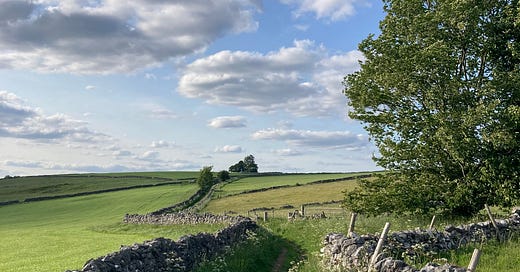


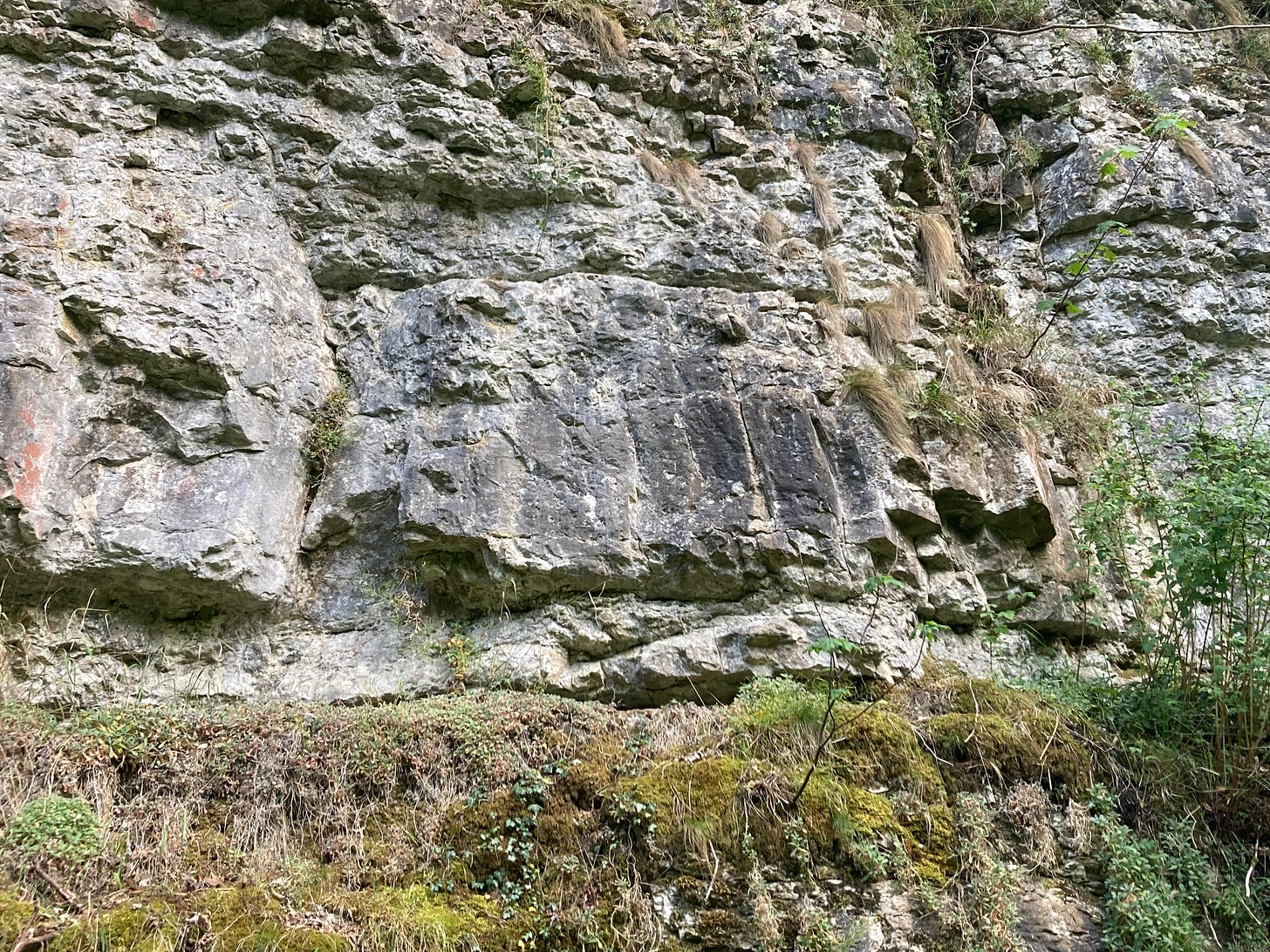

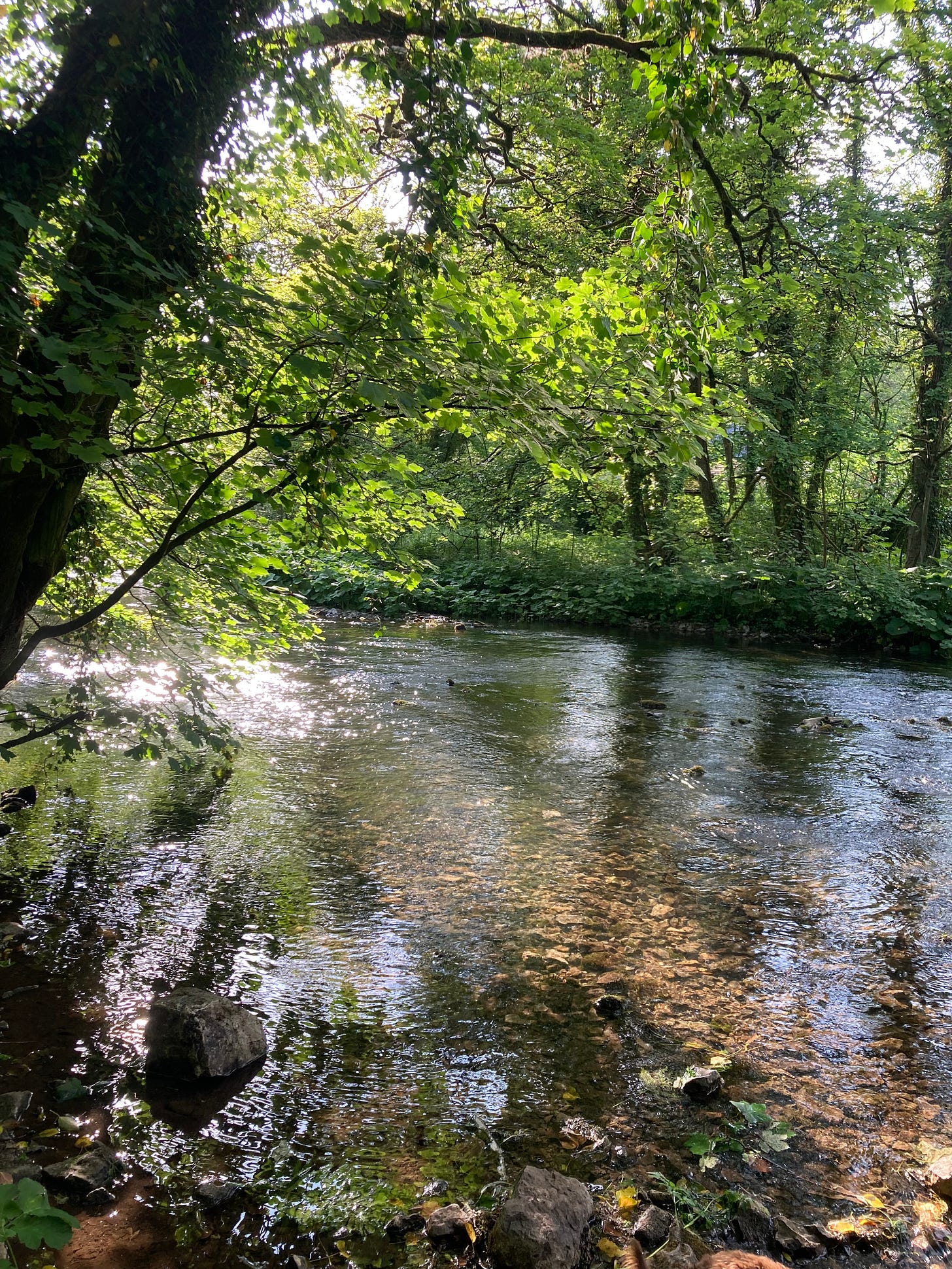
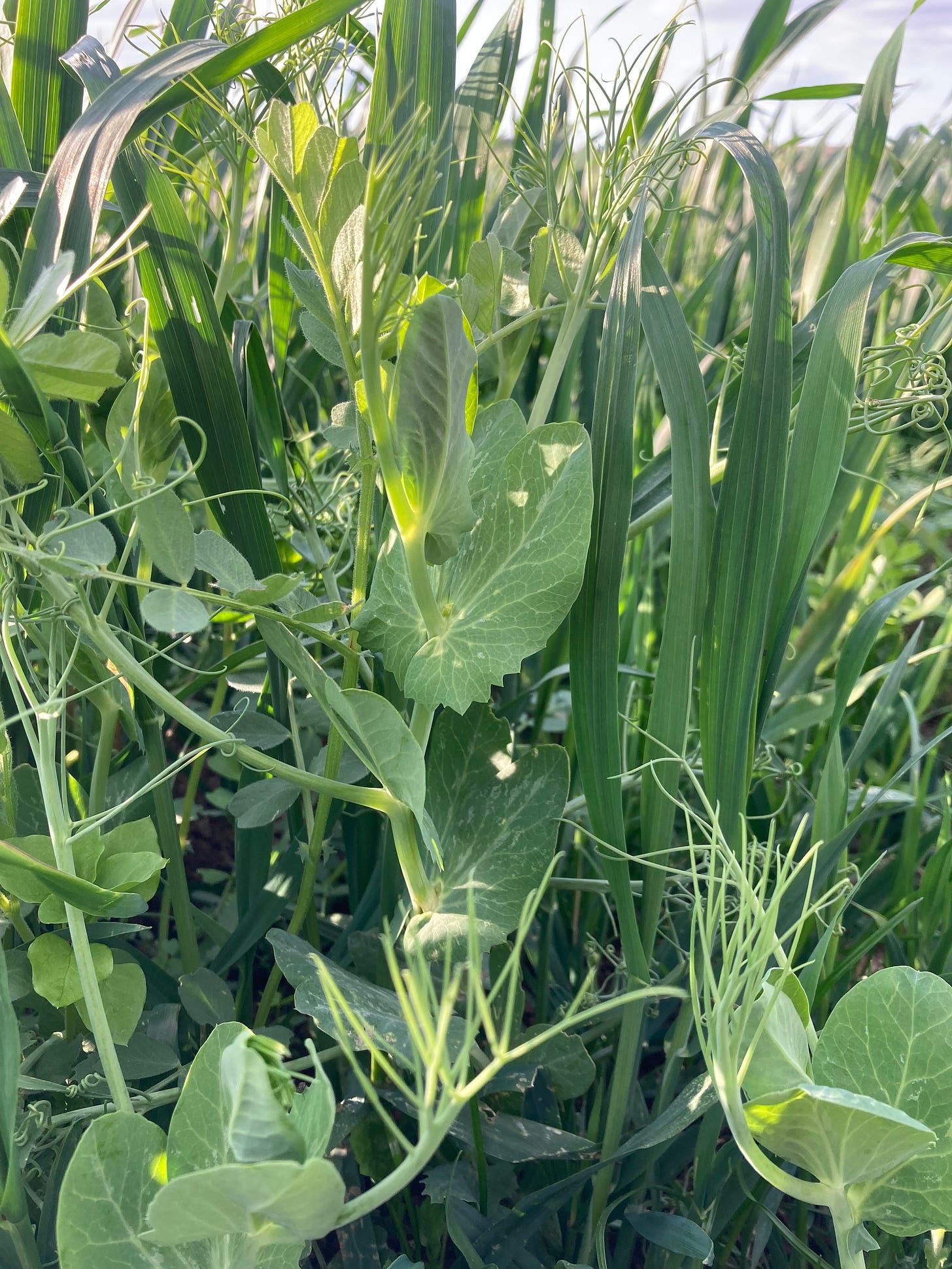
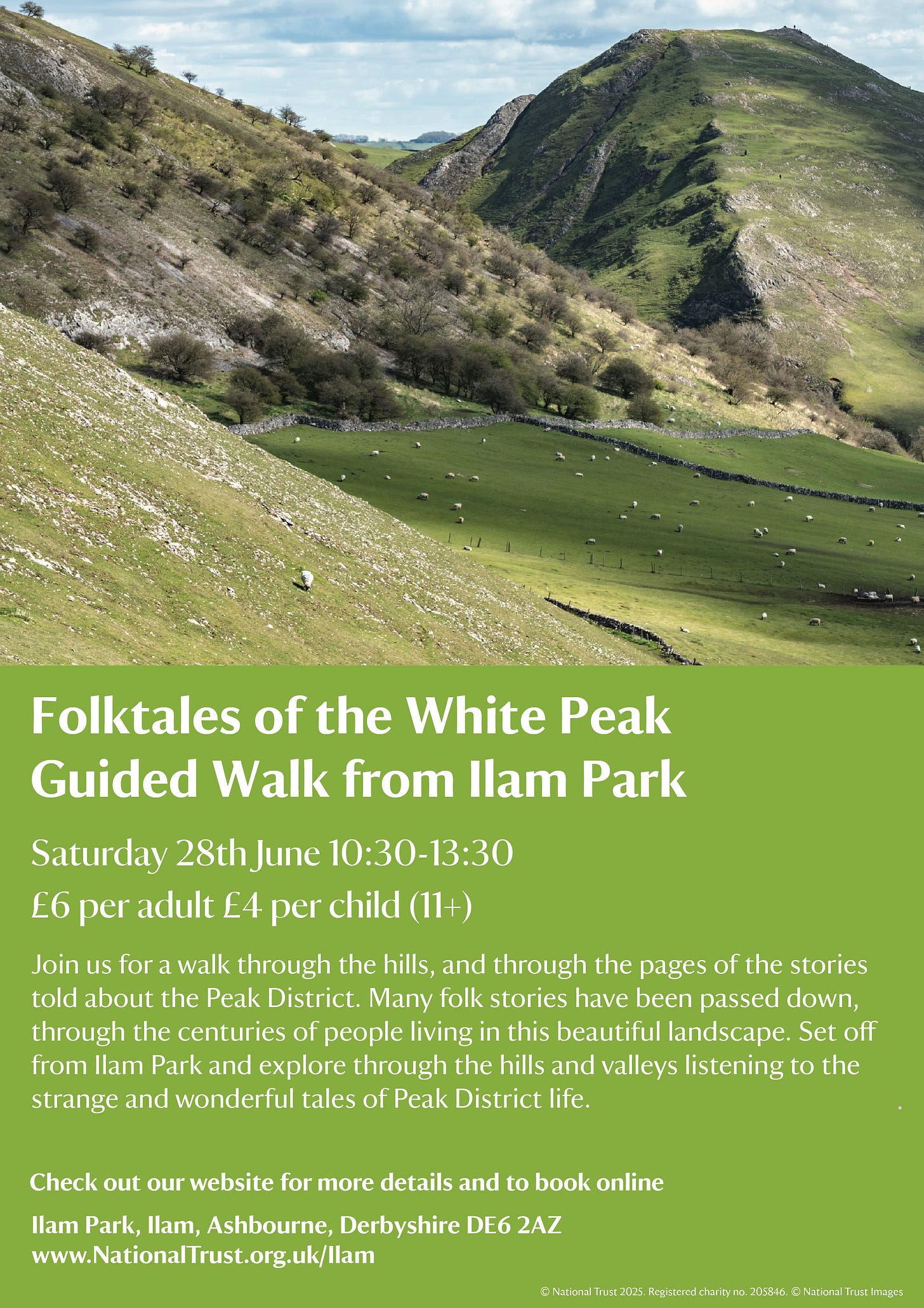
Having tried Wirksworth Wakes cakes, unfortunately I can’t recommend them. However keen to try out the Ashbourne ones, they sound lovey!
I'm going to make my own Wake cakes! Thanks for posting the recipe!